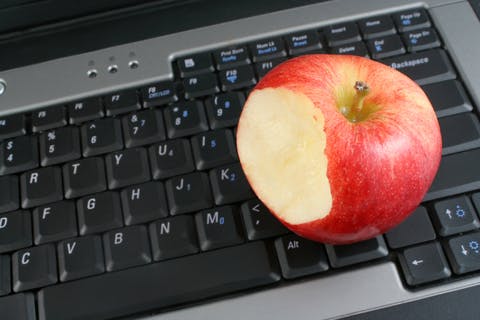There’s no doubt that we have a lot of unhealthy people in the U.S. workforce — and more set to enter it at some point.
Disease management, acute risk and wellness efforts are trying to tackle the situation with services that require employees to make major adjustments to their day-to-day routine.
I sometimes despair over the effectiveness of these efforts. I’m not sure that they alone can do the trick. What’s needed, really, are seismic environmental and social changes.
But we can’t wait for that. So, I try to think small — and across boundaries. What’s working elsewhere that we can co-opt? What do we know works but we’re not doing? Today’s post is a glimpse into my wondering if we can make headway with the simple, ordinary sign. Here are some examples:
- Going up? Most office buildings tuck stairs away to maximize usable office space and limit their use to fire drills, yet climbing stairs is a low-cost, low-fuss way to add regular, light exercise to our day. Newer buildings reflect this knowledge, redesigning stair space so that it’s open, inviting, and part of the work flow. Renovating your office space may not be within your budget or your control (ditto for adding piano stairs, see below), but that doesn’t mean you can’t increase stair traffic. Research shows that hanging signs to redirect people from the elevators to the stairs has a positive impact on stair use. drawing people to the stairs with music and rotating artwork? even more so.
- Eat. Drink. Smile. Restaurants and food chains are posting nutrition information to better guide people’s purchases, or at least inform them of the caloric damage before they chomp down on that 500-calorie raspberry scone. As we know from the struggle to nail food labeling, it’s not all that simple. Information does not necessarily translate into new behaviors, and providing information that’s actually usable is tougher still. Consider traffic light labeling (eat this/not that). Or, a simple smiley face. These visual cues are working elsewhere, both with food and with other consumer products. Could these same visual cues make eating healthy a little less work and direct motivated people to the healthier cafeteria choices?
- Add some cachet to parking far away. Whenever I arrive at IKEA’s corporate headquarters, I’m struck by who gets the choice parking spots. They’re not held for visitors or the big man on campus; they’re held for employees in hybrids or carpools. It’s a subtle way to emphasize IKEA’s corporate stance on sustainability. What about emphasizing a corporate commitment to health? Could it work to flip choice parking on its head and make the choice parking the parking that’s farthest away? Of course, we all know the tip about taking the spot farthest from the entrance, but who does it? (I know; you do.) More may still be needed here, such as a combo of cleverly-written custom signs and related perks.
- Drink H²O. Everyone else’s doing it. Signs in hotel rooms convince us not to launder our towels on a daily basis by guilting us into being like everyone else. We’re driven by our desire to be like others, and we’re influenced by what those around us do. What would happen if we applied this knowledge to the at-work beverage vending machine? What if instead of posting “Have you had your 8 glasses of water today?” on the machine, you posted “Buy H²O. 60 percent of our customers do”? Perhaps we could influence drink choice.
Take the stairs or take the elevator. Add a salad to your lunch or grab some chips. Buy the world a Coke or yourself some water. Every day we face small decisions that affect our health, decisions that could go one way or another if someone just showed us a sign.
This was originally published on Fran Melmed’s Free-Range Communication blog.
